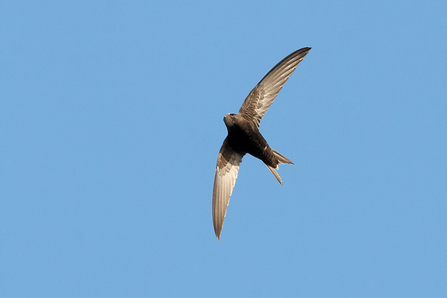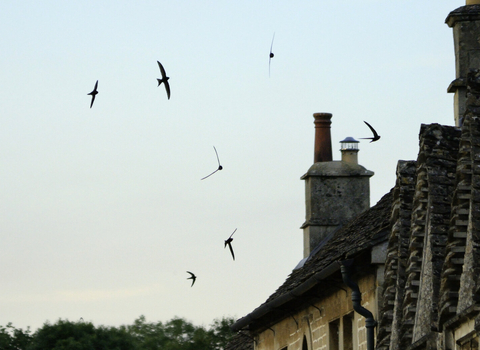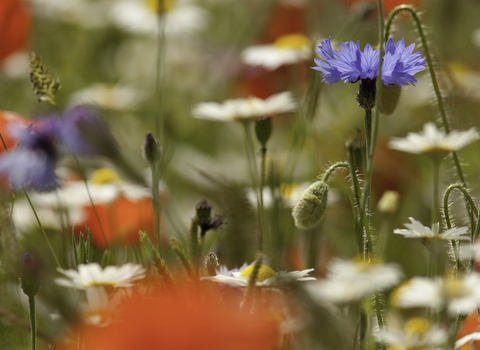“And here they are, here they are again!” Ted Hughes thrilled to the swifts when they returned to these shores in May. These are the first birds in a series of waves of swifts, arriving at different times depending on their age.
Swifts spend most of their lives soaring high in the sky, only ever landing to nest. They are easy to spot as they look like an arrow whirling through the sky, and often fly in groups. Originally, they would have nested in trees or cliffs but now prefer the roofs of old buildings like churches. Swifts spend the winter in Africa but travel to Britain every year in April and May.
They feast on small flying insects by catching them in flight. Insects collect in a special pouch at the back of the swift's throat, where they are bound together by saliva until they form a kind of pellet known as a bolus, which can be regurgitated and fed to chicks. One single bolus can contain over 300 insects, with some holding over 1,000!





